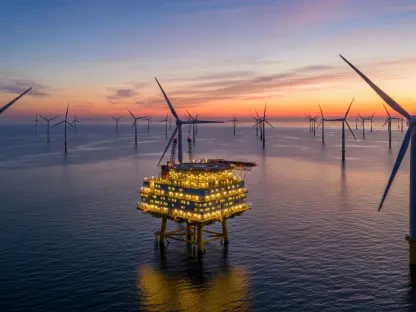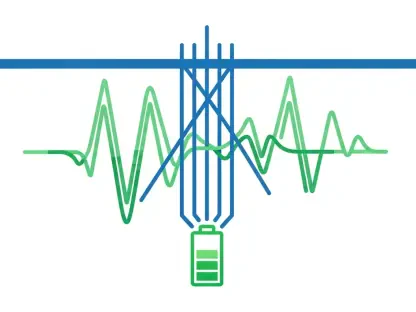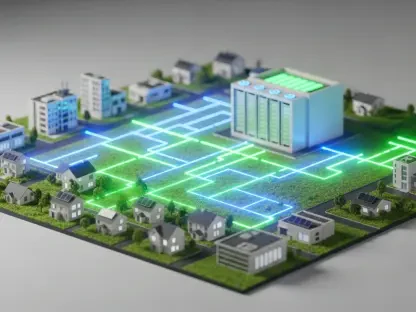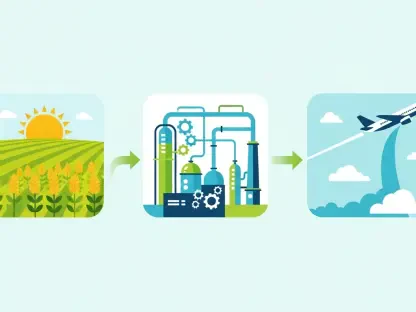Today, we’re thrilled to sit down with Christopher Hailstone, a seasoned expert in energy management, renewable energy, and electricity delivery. With his deep knowledge of the U.S. utilities sector, grid reliability, and security, Christopher offers unparalleled insights into the dynamic world of clean energy. In this conversation, we’ll explore the remarkable surge in U.S. clean energy stocks in 2025, the growing influence of nuclear power, the critical role of materials for sustainable technologies, and the innovative advancements in fuel cells and batteries. Join us as we unpack the trends, challenges, and opportunities shaping the future of energy.
What’s fueling the dramatic rise in U.S. clean energy stocks this year, even with policies that seem to lean away from sustainable energy initiatives?
It’s really a fascinating mix of market dynamics and external pressures. Despite some policy headwinds, investor enthusiasm for clean energy has skyrocketed in 2025 due to the urgent need for more power, especially driven by tech advancements. The growth isn’t tied to policy support as much as it is to practical demand—think data centers and industrial expansion. Plus, worsening trade tensions with China have pushed investors toward domestic firms that can supply critical components for energy and tech industries. It’s less about government backing and more about market necessity and a shift toward self-reliance.
How is the AI boom influencing the growth of clean energy companies, particularly with the power demands of data centers?
The AI boom is a massive driver. Data centers powering AI applications consume enormous amounts of electricity, and they need reliable, scalable solutions fast. This has put clean energy firms, especially those in nuclear and onsite power generation, in the spotlight. Companies that can offer consistent, low-carbon energy sources are seeing huge interest because data centers can’t afford downtime or rely solely on traditional grids. It’s a perfect storm—AI’s energy hunger is accelerating investment in clean tech as a practical solution.
Can you elaborate on how trade tensions with China are creating opportunities for U.S. clean energy firms?
Absolutely. The U.S.-China trade friction has forced a rethink on supply chains, especially for materials and components critical to energy, tech, and defense. U.S. firms that produce these resources or technologies are stepping into the gap as companies look to reduce reliance on Chinese imports. This shift isn’t just about tariffs; it’s about national security and economic independence. Clean energy companies that can deliver domestically are benefiting from a surge in demand, as customers prioritize local suppliers over cheaper, foreign alternatives.
With stock gains ranging from 200% to 700% in 2025, do you see this level of growth as sustainable, or is it more of a bubble fueled by hype?
It’s a mixed bag. The growth reflects real demand and exciting potential, especially in sectors like nuclear and battery tech, but not all companies are on solid ground. Some are riding high on future promises rather than current profits, and that’s where the risk lies. I think we’ll see a correction for firms without clear paths to revenue, but those with proven technologies or strategic partnerships could sustain momentum. Investors need to look beyond the headlines and focus on fundamentals—cash flow, contracts, and scalability.
Turning to nuclear power, what’s behind the over 550% surge in Centrus Energy’s stock this year, and how does government support play into it?
Centrus Energy’s rise is tied to a renewed focus on nuclear power as a clean, reliable energy source. The Trump administration’s push to fast-track nuclear reactor development has created a favorable environment, boosting confidence in companies like Centrus. Their pioneering work with High-Assay Low-Enriched Uranium, or HALEU, positions them as a key player for next-gen reactors. Government support isn’t just rhetoric—it’s about policy moves to prioritize nuclear as a cornerstone of energy security, which has directly lifted Centrus’s market value.
Why is Centrus Energy’s HALEU so critical for the future of nuclear reactors?
HALEU is a game-changer because it’s the fuel needed for advanced nuclear reactors, which are more efficient and safer than older designs. Unlike traditional low-enriched uranium, HALEU allows for smaller, more flexible reactor systems with higher energy output. This is essential for meeting modern power demands, especially in compact settings like data centers or remote locations. Centrus being the first U.S. company licensed to produce it gives them a strategic edge in a sector poised for growth.
Oklo has seen its stock soar by over 700% in 2025. What makes their small reactors so appealing, especially for data centers?
Oklo’s small modular reactors are a perfect fit for data centers because they offer a compact, reliable, and clean power source right on-site. These reactors can be deployed faster than traditional large-scale nuclear plants and are designed to provide consistent energy without the carbon footprint of fossil fuels. For data centers, which need uninterrupted power and are under pressure to go green, Oklo’s technology is a dream solution. The market’s optimism about their potential to capture this niche is what’s driving the stock surge.
What are the biggest hurdles Centrus and Oklo face in turning this nuclear optimism into actual revenue?
The main challenge is the timeline. Developing and deploying nuclear technology, even small reactors, takes years due to regulatory approvals, safety protocols, and construction. While the buzz is strong now, both companies need to secure firm contracts and prove they can deliver on promises. There’s also the risk of competition—if other energy solutions, like renewables with storage, scale up faster, nuclear could lose ground. Turning potential into profit means navigating these delays and maintaining investor trust in the meantime.
Given the long lead times for nuclear projects, how might delays impact these companies if data centers find quicker power alternatives?
Delays could be a real problem. Data centers operate on tight schedules and can’t wait a decade for power solutions. If nuclear projects drag on, these facilities might turn to faster options like solar with battery storage or even natural gas as a stopgap. For Centrus and Oklo, that could mean thinner order books and a hit to investor confidence. They’ll need to focus on interim solutions or partnerships to stay relevant while their long-term projects come online.
Shifting to materials, can you explain what U.S. Antimony Corp and American Resources Corp produce and why their products are vital for clean energy?
U.S. Antimony Corp focuses on antimony, a key material for battery energy storage systems, which are critical for stabilizing renewable energy grids. American Resources Corp refines rare earth elements used in magnets, batteries, and high-tech applications like electric vehicles. Both materials are foundational for clean energy tech—without them, you can’t build the systems needed for a sustainable future. Their stock gains in 2025 reflect growing recognition of how essential these resources are.
How has U.S. government support boosted these material producers in their growth?
The government has stepped in with incentives and policies to bolster domestic suppliers of critical materials, recognizing the strategic importance of reducing dependence on foreign sources. This support includes funding, grants, and favorable regulations that help companies like U.S. Antimony and American Resources scale up production. It’s not just financial—it’s about creating a framework where U.S. firms are prioritized for contracts in energy and defense, giving them a leg up in a competitive market.
With China’s dominance in the materials market, do you think these U.S. companies can compete globally, or are they limited to the domestic market?
Competing globally is tough because China controls a huge share of production and often undercuts on price. U.S. companies have an edge in the domestic market due to government backing and customer preference for local suppliers, but scaling internationally is a different story. They’ll need to focus on quality, innovation, and strategic partnerships to carve out a niche. For now, their growth is likely tied to U.S. demand, but long-term, they’ll have to address cost competitiveness to go global.
Looking at fuel cell technology, what’s driving Bloom Energy’s 400% stock increase this year, and what’s unique about their products?
Bloom Energy’s surge is largely due to their fuel cells, which generate electricity directly at business sites, cutting reliance on the grid. Their technology is ideal for companies needing reliable, on-demand power, like AI factories. A major partnership to become a preferred onsite power provider for such facilities has fueled investor excitement. What’s unique is their ability to offer clean, customizable energy solutions that align with corporate sustainability goals while meeting immediate power needs.
What’s your forecast for the clean energy sector over the next decade, especially with the rapid advancements and challenges we’ve discussed?
I’m cautiously optimistic. The next decade will likely see clean energy solidify as a core part of the U.S. energy mix, driven by tech demands and the push for carbon neutrality. Nuclear and battery tech will play bigger roles, especially as grid reliability becomes non-negotiable. However, challenges like regulatory hurdles, supply chain issues, and competition from cheaper fossil fuels won’t disappear overnight. I expect consolidation—stronger players will thrive, while overhyped firms may falter. The key will be balancing innovation with practical deployment to meet real-world needs.









